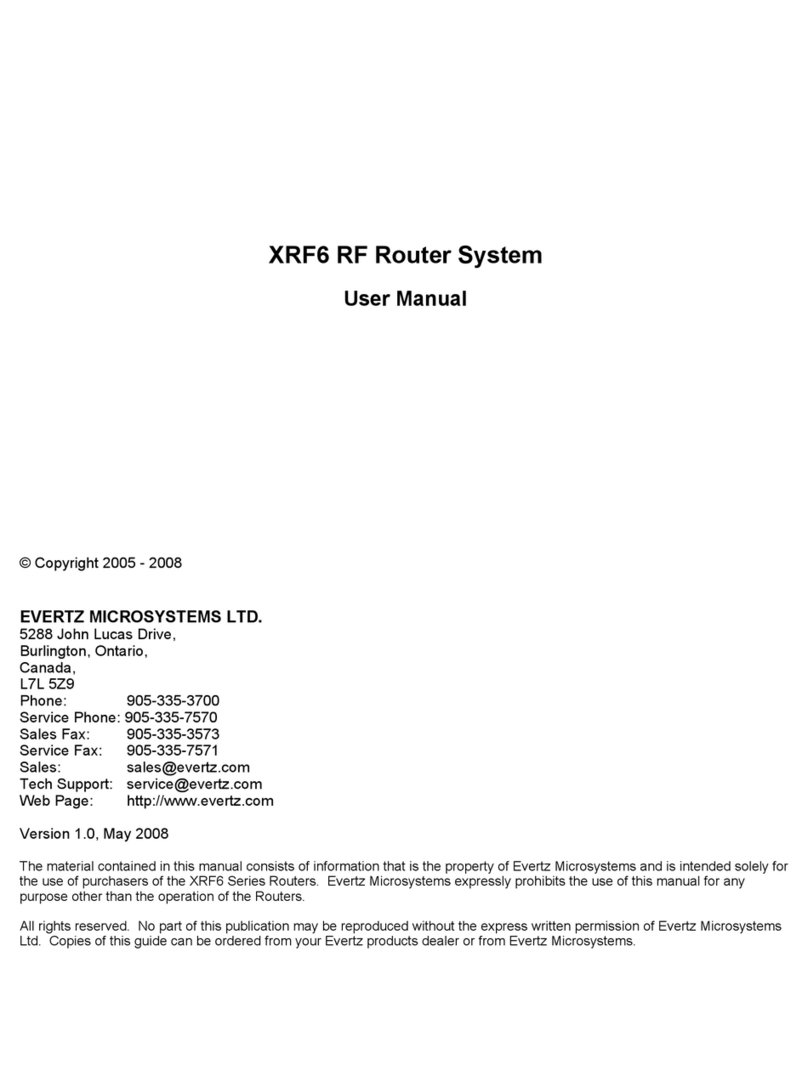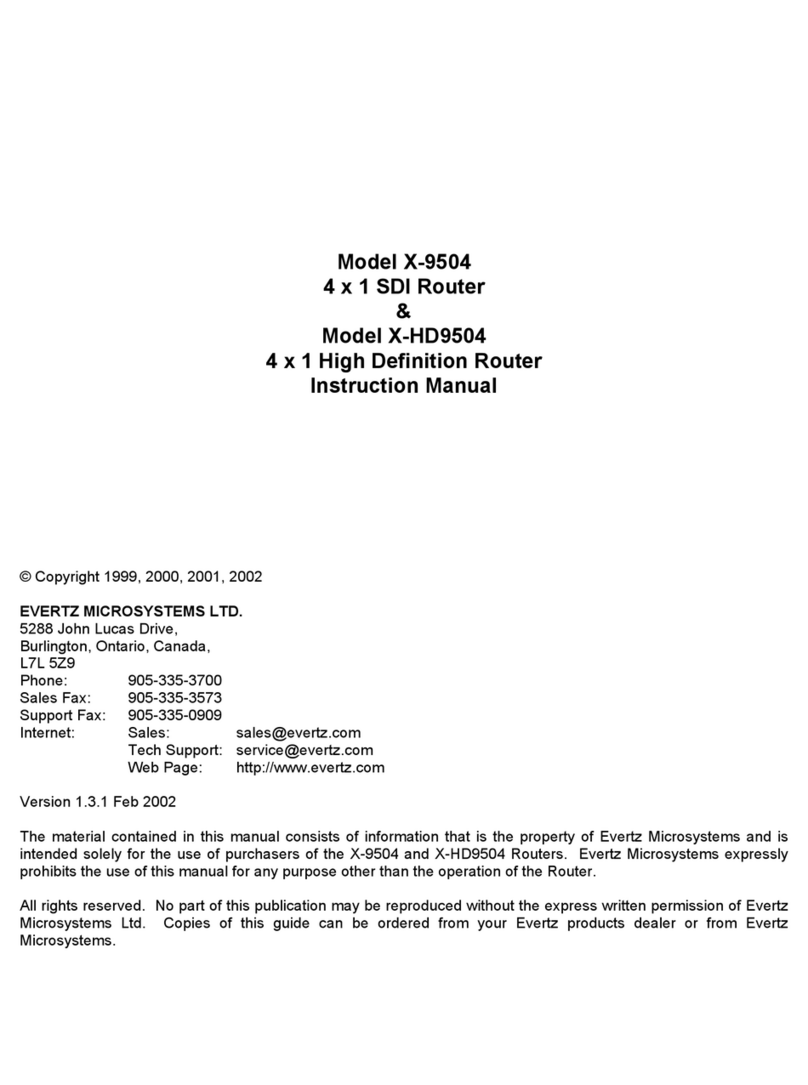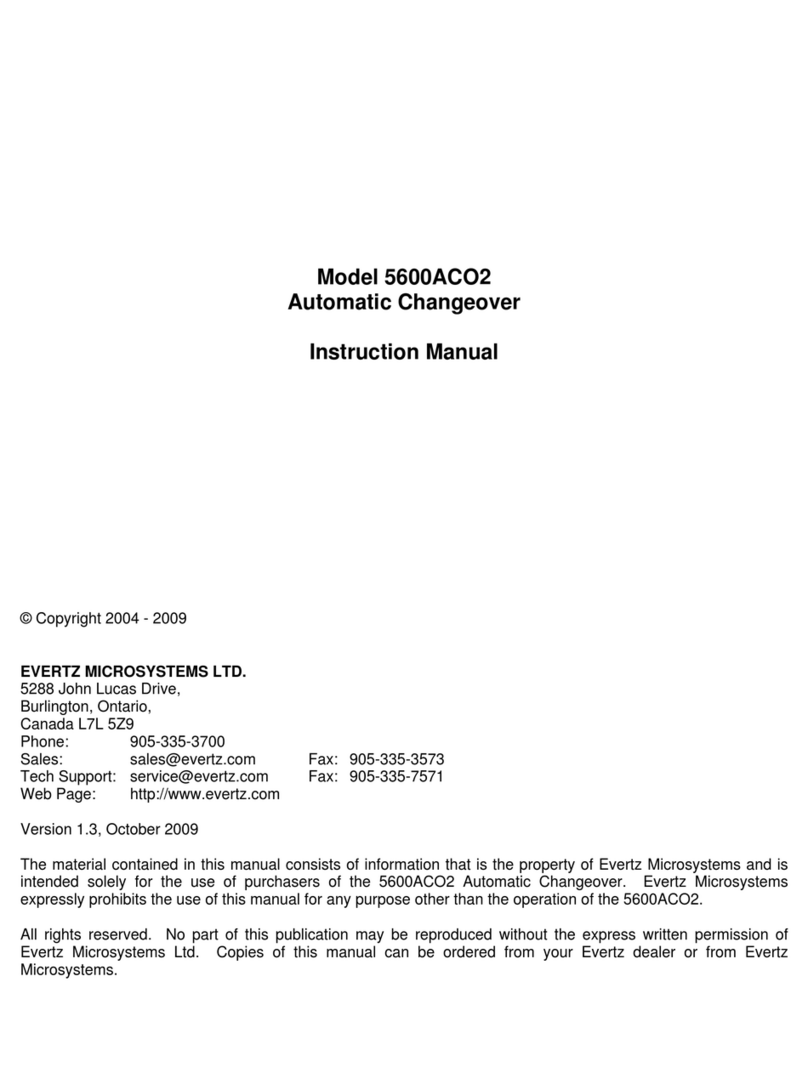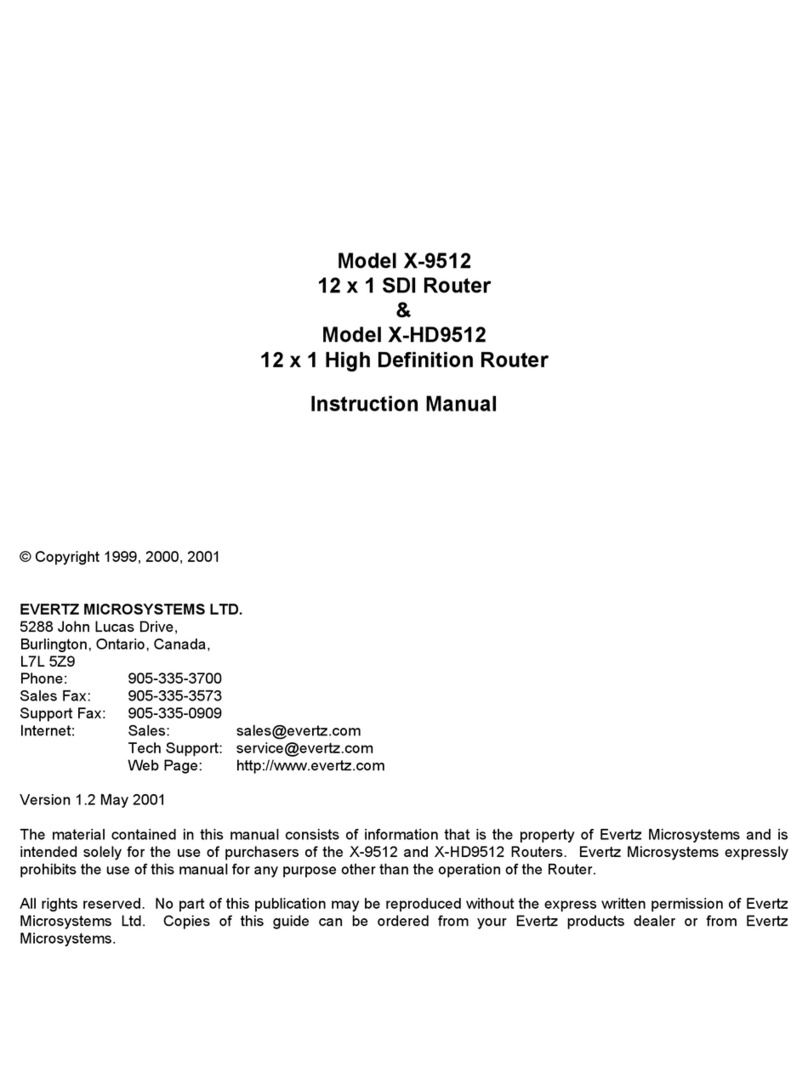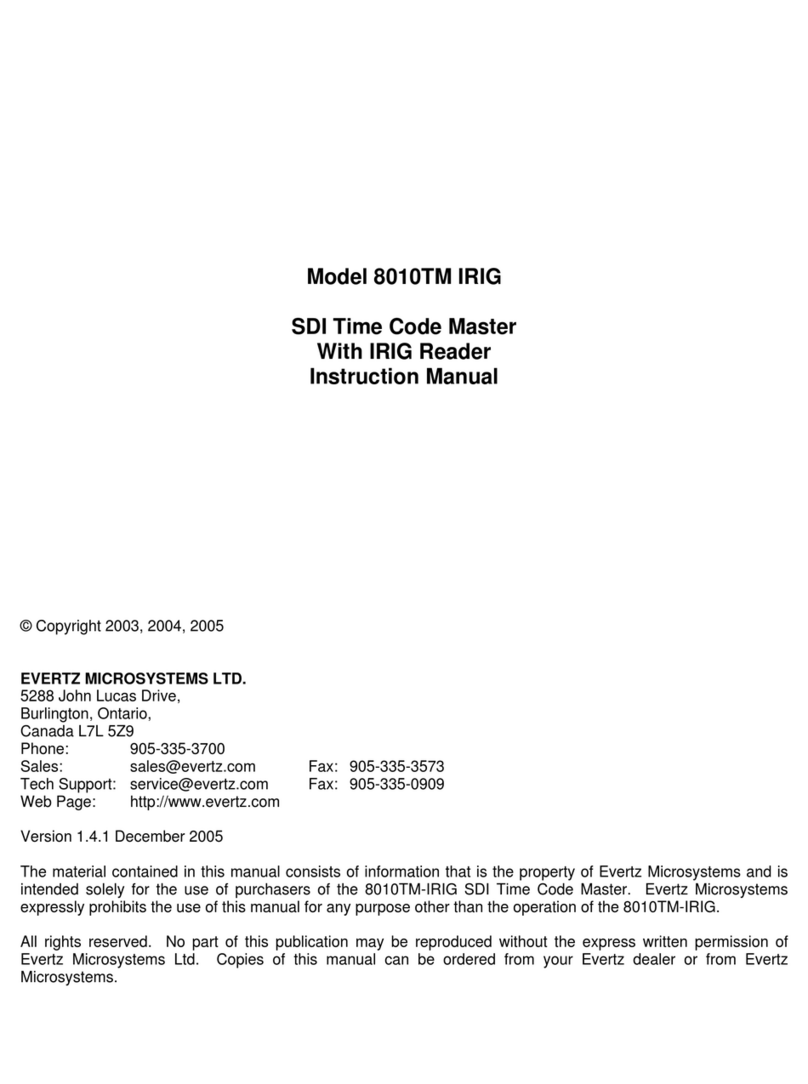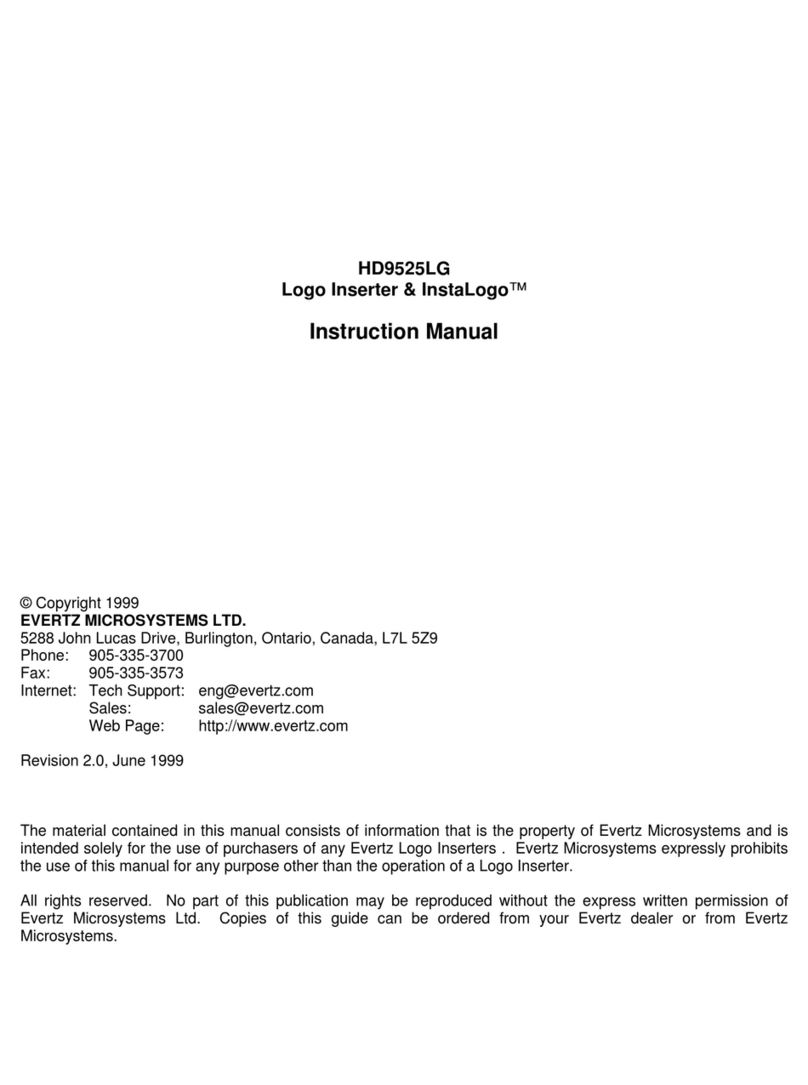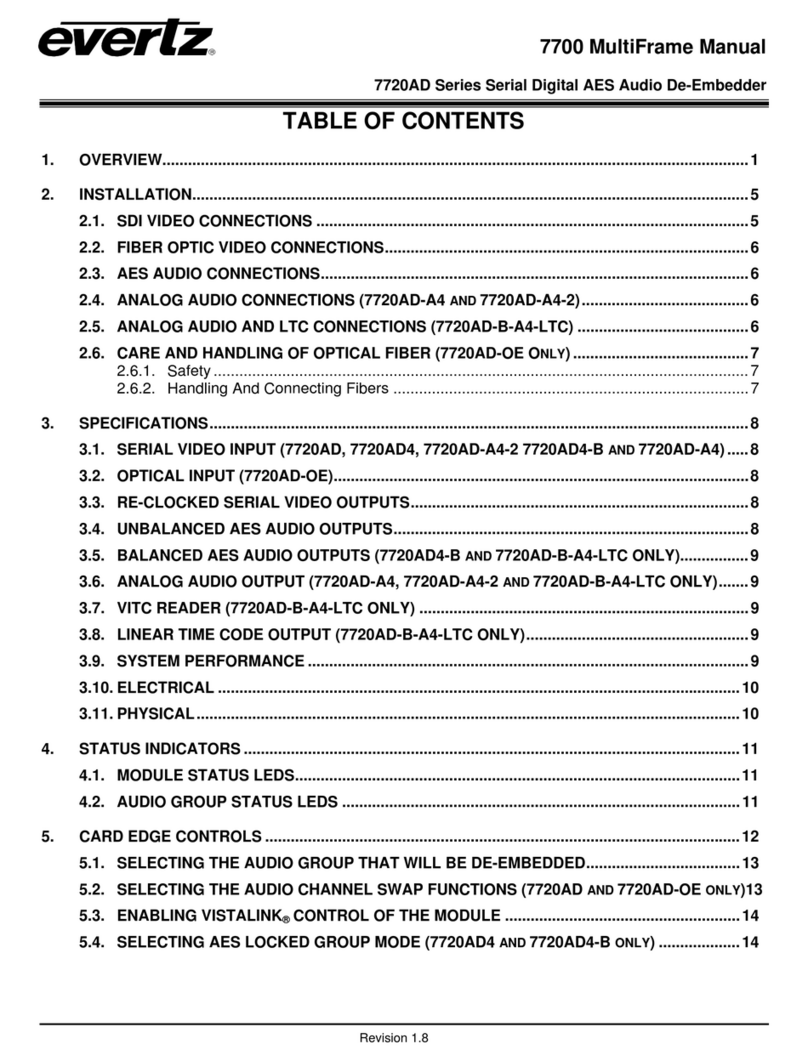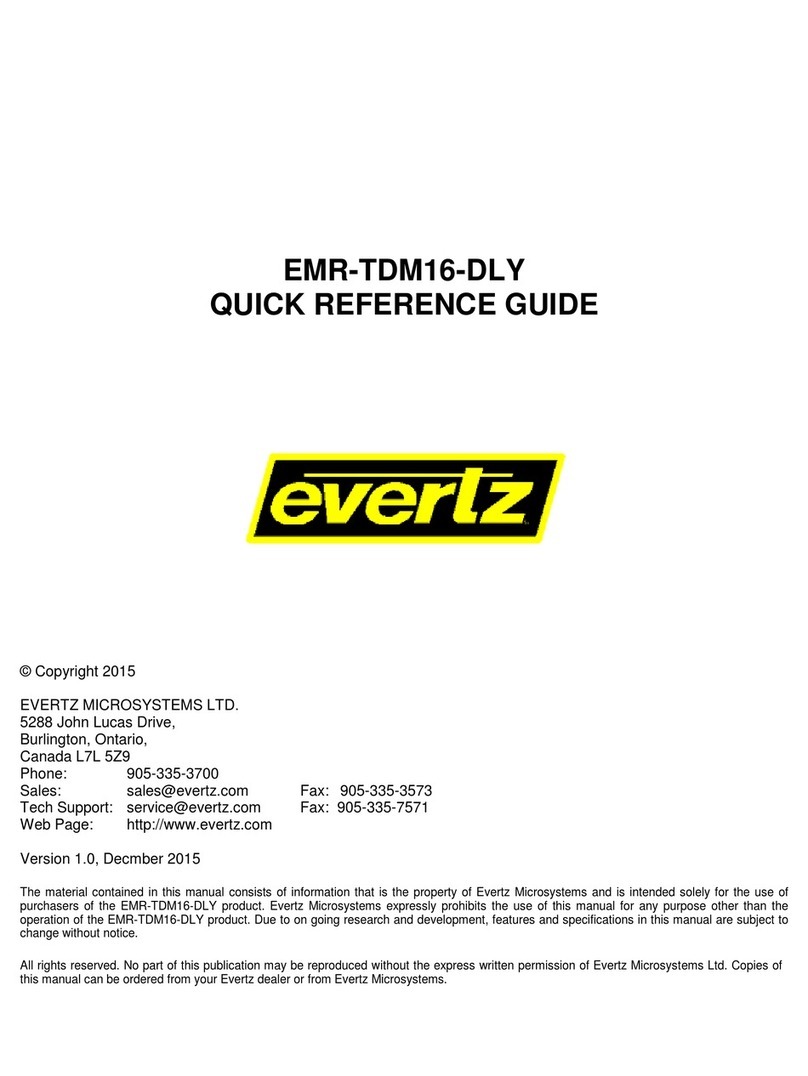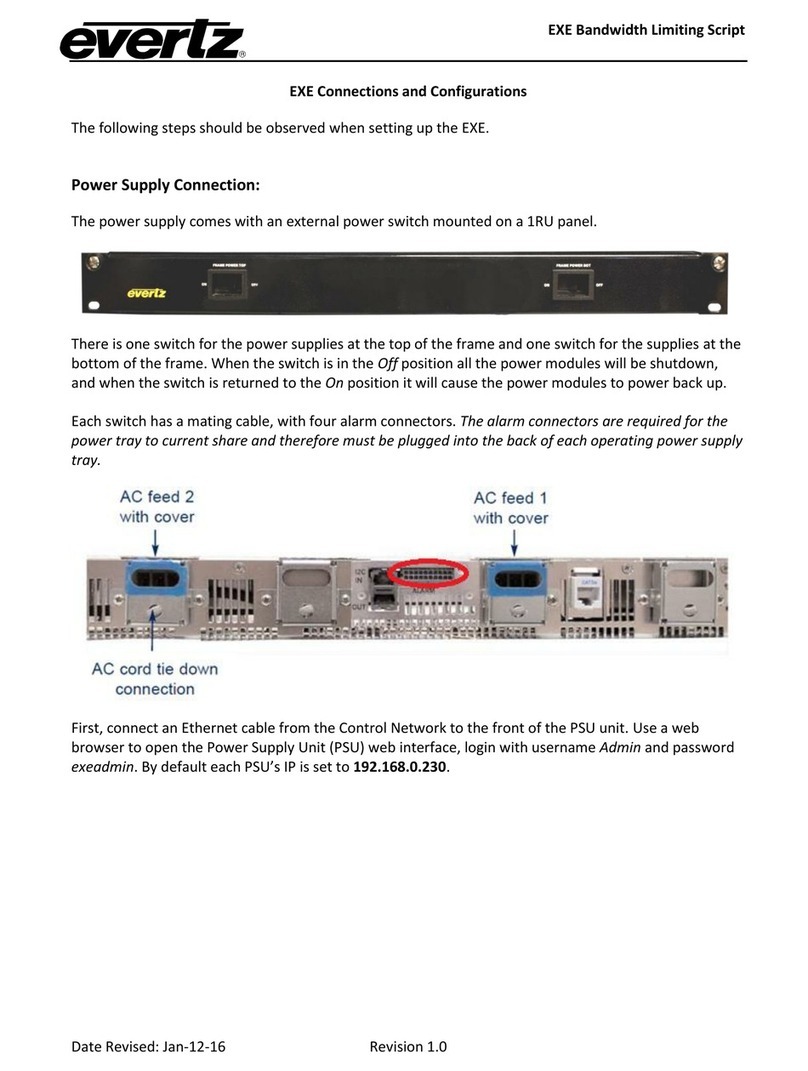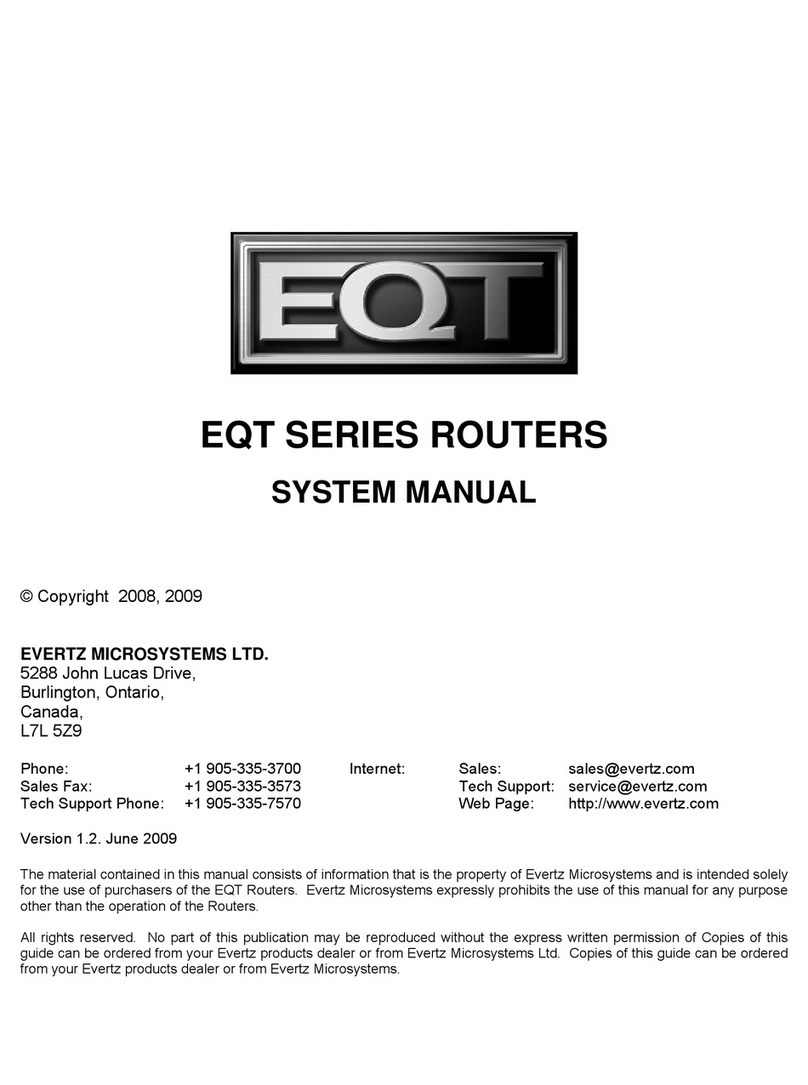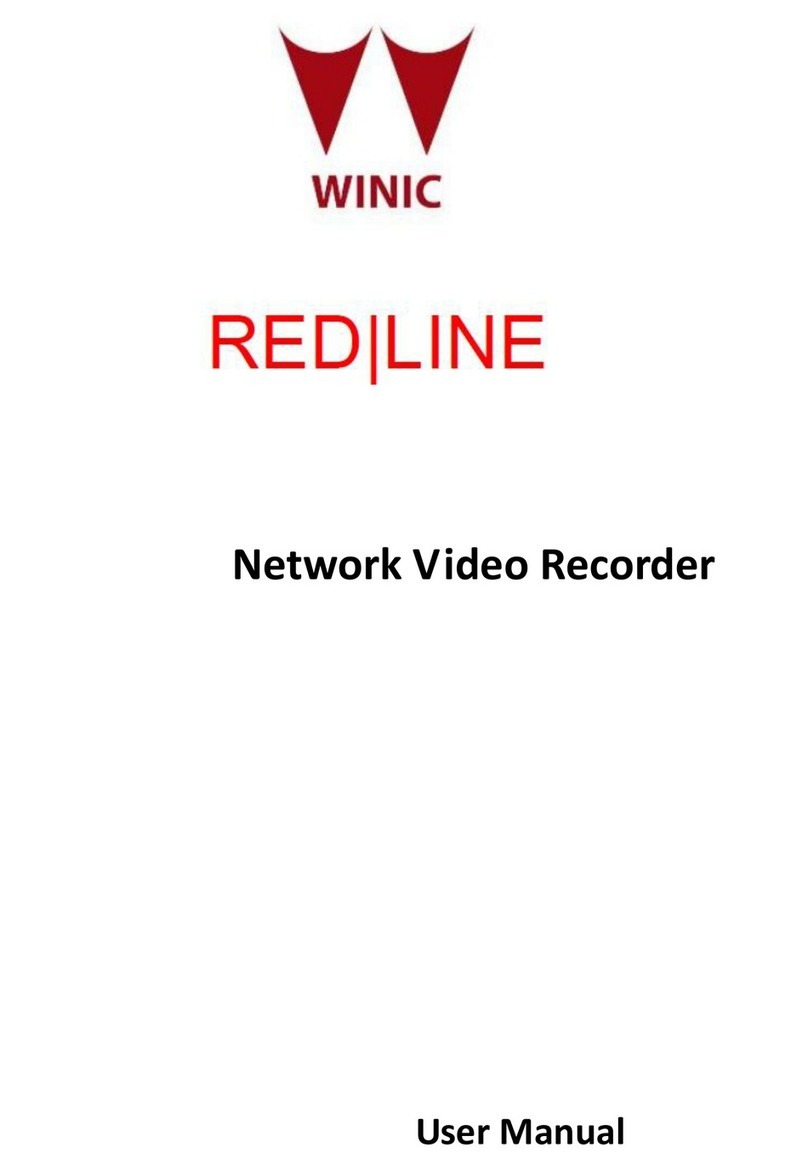
EV-BLOC
1. INTRODUCTION
This microcontroller (MCU) based module contains a full speed (1/30 to 70
times play) longitudinal time code (LTC) reader and LTC translator/phase
restorer. Installing the optional plug-in VITC submodule gives the reader
tremendous additional capabilities. It can now read VITC at speeds from
still frame to in excess of 40 times play speed. The front panel mode
switch allows the LTC/VITC reader pair to operate in either an LTC or VITC
only mode or in an automatic switchover mode. The powerful MCU
firmware automatically selects valid code from either source and provides
accurate time code reading from still frame to 70 times play speed.
A fully decoded and regenerated play speed LTC output is provided, using
whatever source is currently being read (indicated by the LTC and VITC
LED’s). In many VTR’s the tie code head position with respect to the video
signal can vary quite considerably from machine to machine causing a
code phase shift relative to the video frame. When the incoming code is at
normal play speed, the output code is properly synchronized to the video,
thus compensating for any LTC code misalignments from the video, and
providing an LTC translation of the incoming VITC.
The recovery of recorded LTC time code at other than play speed has
always presented some degree of difficulty, particularly with low end 3/4”
recorders lacking a separate address track. The high speed reader in the
S623 employs sophisticated input conditioning and clock/data separator
circuits to reliably recover LTC over the full shuttle and wind speed range of
most VTR’s.
The VITC reader sub-module contains a full wind speed (still to over 45
times play speed) VITC reader, designed for use with non time base
corrected video signals. Although the use of time base correctors will
enhance the recovery range of the VITC reader, the amount of
improvement is dependant on the type of TBC and transport being used.
The module contains all the necessary video processing circuits and
therefore, requires no external signals other than the video signal itself.
Recovered VITC data is transferred to the companion LTC reader module
for validation and further processing. If the VITC reader is selected, the
data will then be presented to the LTC translator output.
A serial data port provides time code data for interface to an editor or other
computer device. Both RS-232-C and RS-422 levels are supported.
Reader data may be sent continuously, or on request only. In addition, the
computer can set up various operation modes.
The S623 reader module is available in three versions:
1. Model S623: LTC Reader
2. Model S623-VIR: LTC/VITC Reader
3. Model S623-EDL: LTC/VITC Reader with Edit Decision List
Output
INTRODUCTION Page 1-1
